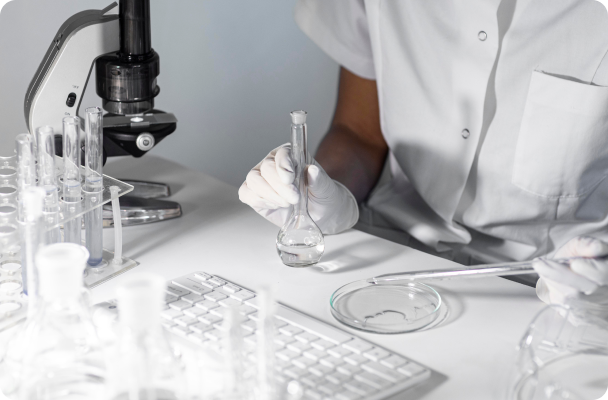Home › Biological sample › Infectious diseases › Escherichia coli
Escherichia coli Samples
For research applications
The development of drugs and diagnostic tests for the treatment and detection of E. coli infections requires conducting studies on biological samples obtained from patients with E. coli infections.
Here's a brief overview of various infectious diseases caused by E. coli and how the service provided by Labtoo contributes to accelerating R&D projects in the pharmaceutical industry.


Are you looking for biological samples from patients infected by Escherichia coli?
What are the different types of Escherichia coli?
Escherichia coli (E. coli) is a Gram-negative bacterium that is part of the normal intestinal flora of humans and homoeothermic animals. The majority of E. coli strains are commensal and contribute to digestive processes. However, some pathogenic strains can lead to diseases such as gastroenteritis or urinary tract infections, which can be potentially dangerous.
Pathogenic E. coli are generally classified into different categories, among which the most notable include:
Enterohemorrhagic Escherichia coli
These strains, among the most widespread, secrete a Shiga toxin associated with pathologies such as bloody diarrhea and hemolytic-uremic syndrome (HUS), characterized by red blood cell hemolysis and kidney failure.
Enteropathogenic Escherichia coli
They are associated with cases of diarrhea, particularly in infants and young children. They adhere to intestinal epithelial cells and cause effacement, leading to lesions and impairing the intestinal barrier function.
Enteroinvasive Escherichia coli
These strains have the ability to invade intestinal wall cells, causing symptoms similar to bacillary dysentery, such as severe abdominal pain, bloody diarrhea, and fever.
Enteroaggregative Escherichia coli
EAEC utilize an aggregation mechanism to colonize the intestinal mucosa. They form biofilms on the surface of intestinal epithelial cells, aiding in adherence and multiplication, thereby contributing to the persistence of infection
| Pathogenic E. coli Types | Characteristic Symptoms | Most Affected Populations |
|---|---|---|
| EHEC (Enterohemorrhagic Escherichia coli) | Bloody diarrhea, hemolytic-uremic syndrome (HUS) | Children, elderly, adults |
| ETEC (Enterotoxigenic Escherichia coli) | Watery diarrhea, abdominal cramps, vomiting | Travelers, children in developing regions |
| EPEC (Enteropathogenic Escherichia coli) | Diarrhea, dehydration, abdominal pain | Infants, young children |
| EIEC (Enteroinvasive Escherichia coli) | Bloody diarrhea, abdominal pain, fever | All ages, particularly in resource-limited regions |
| EAEC (Enteroaggregative Escherichia coli) | Persistent diarrhea, abdominal pain, dehydration | Children, immunocompromised individuals |

Transmission of these pathogenic E. coli strains often occurs through consumption of contaminated food or water, contact with infected animals or sick individuals, as well as other fecal-oral transmission routes. Infections with pathogenic E. coli can vary in severity, ranging from mild forms of diarrhea to potentially deadly diseases, especially in vulnerable individuals such as the elderly, infants, and immunocompromised individuals.
Explore Labtoo's Service for Your Biological Sample Research
Labtoo assists you in sourcing biological samples from patients with an E.Coli infection. Our team manages the entire project of transferring biological materials from inception to sample delivery.
- Feasibility assessment of sample availability or clinical collection from referenced clinical centers
- Validation of regulatory aspects
- Establishment of a contractual framework
- Dispatch of desired samples under appropriate conditions
- Transfer of associated clinical data
- Additional analytical and experimental services
Types of available samples
Urine
In the context of a urinary tract infection caused by Escherichia coli, a urine sample is collected to perform a cytobacteriological examination of urine (CBEU) to confirm the presence of the pathogenic agent. These samples can subsequently be preserved under appropriate conditions for future research projects.
Stool
In cases of Escherichia coli infection, the collection of fecal samples is crucial for identifying the pathogenic agent. These samples can also be preserved for future research on the behavior and characteristics of this pathogenic bacterium.
Other
Other types of samples such as rectal or genital swabs are also commonly used in research on infectious diseases.
-
Whole blood from patients with Escherichia coli infection. Particularly in the context of patients who have developed bacteremia.
-
PBMC
-
Plasma
-
Serum
-
Leukapheresis
- Fresh Tissues
- Frozen Tissues
- FFPE Tissues
Typical associated clinical data
-
- Age
- Gender
- Ethnicity
- Detection Method
- Serological result
- Bacterial Load
- Follow-up Treatment
- Simptomatology
- Medical Imaging
- Positivity/Negativity for certain Infections
- Other Data (upon request)

Labtoo identifies clinical sites that can prepare and transfer sample collections tailored to your specific project needs.
Contact our team to discuss your project.
Send your request to our team:
Symtoms of Escherichia coli infection
Symptoms associated with an infection by pathogenic Escherichia coli exhibit similarities across different categories.
Abdominal pain
A common symptom, often severe and localized.
Diarrhea
With cases sometimes presenting bleeding, especially in infections caused by enterohemorrhagic strains
Vomiting
Also common, often accompanied by a general feeling of discomfort.
Fever
Indicating a systemic inflammatory response to infection.
Blood in the urine
Often accompanied by pain during urination and a strong odor.
These symptoms can vary depending on the severity of the infection and the specific strain of E. coli involved. For example, EHEC infections are often associated with more severe bloody diarrhea, while ETEC strains are generally characterized by watery diarrhea and abdominal cramps.
Diagnosis and treatment of Escherichia coli
The diagnosis of Escherichia coli (E. coli) presence is performed either by stool culture, i.e., bacterial culture from the patient's stool samples, or by urine analysis when the infection is urinary.
Given the diversity of E. coli strains, several tests can be implemented to determine their specific type:
Detection of Shiga toxin
This specific protein of enterohemorrhagic strains (EHEC) can be detected to confirm the presence of this particular strain.
Identification of a specific strain gene
by PCR
Serotyping
Allowing for the identification of surface antigens of bacteria, thereby facilitating their classification.
It is strongly discouraged to use antibiotics in the treatment of enterohemorrhagic E. coli infections. Indeed, bacterial lysis by antibiotics can release a large quantity of Shiga toxins into the body, thus worsening the symptoms.
In general, although some antibiotics such as fluoroquinolones may be used for certain strains, the primary treatment consists of rehydration, sometimes accompanied by anti-diarrheal medications, to address the symptoms associated with E. coli infection.
Complications of Escherichia coli infection
An infection with a strain of enterohemorrhagic Escherichia coli can lead to hemolytic-uremic syndrome (HUS), a serious and potentially fatal complication. HUS is primarily observed in children but can also affect adults.
HUS is characterized by a triad of symptoms, including:
Hemolytic anemia
Red blood cells undergo abnormal destruction resulting in anemia. This destruction is induced by the action of Shiga toxin produced by enterohemorrhagic strains of E. coli, which damages blood cells.
Acute renal failure
HUS causes damage to the small blood vessels in the kidneys, which can result in decreased renal function. Symptoms of acute renal failure may include decreased urine production, high blood pressure, and edema.
Thrombocytopenia
This is a decrease in the number of blood platelets, which can lead to coagulation disorders and excessive bleeding.
Patients with HUS may also experience other symptoms such as headaches, fatigue, nausea, vomiting, abdominal pain, and seizures. In severe cases, HUS can lead to potentially fatal complications such as strokes, seizures, chronic renal failure, and death.
Treatment of HUS is primarily supportive and may include intravenous rehydration, blood transfusion, renal dialysis, and management of complications.



